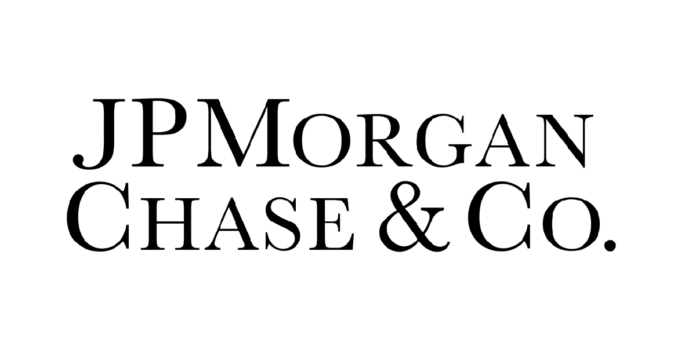New York, NY – A comprehensive analysis conducted on July 5, 2025, reveals that JPMorgan Chase & Co. (JPM), a cornerstone of the global banking sector, appears significantly undervalued at its recent closing price of $296.00. The evaluation, utilizing a sophisticated valuation model inspired by Warren Buffett and enhanced by the McGrew methodology, alongside key profitability metrics, suggests a “Screaming Buy” opportunity for investors.
JPMorgan Chase, recognized as a powerhouse in investment banking, wealth management, and consumer banking, frequently garners investor attention for its stability and growth potential. This deep dive into its intrinsic value and profitability metrics aimed to determine if JPM stock represents a compelling investment opportunity.
The valuation framework, known as the “Merged Master Model: Intrinsic Value Calculator for Stocks,” assessed JPM’s intrinsic value using two distinct approaches tailored for financial services companies. Since JPMorgan is classified as a bank, both the Buffett-Inspired Valuation Method and the McGrew Valuation Method employed Distributable Earnings rather than the Free Cash Flow (FCF) typically used for non-financial companies. These methods project future earnings, discount them to present value, and adjust for net debt to arrive at an intrinsic value per share. A 25% margin of safety was also applied to account for uncertainties, with the stock’s valuation status determined by comparing its market price to the intrinsic value.
The analysis leveraged detailed financial data from JPMorgan’s quarterly reports as of March 31, 2025. Key metrics included a Trailing Twelve Months (TTM) Net Income of $59.695 billion, reflecting strong profitability, and Depreciation and Amortization of $7.964 billion, which are non-cash charges added back to calculate Distributable Earnings. With 2.779 billion shares outstanding, the per-share values were computed. Total Debt stood at $472.204 billion, with Cash and Cash Equivalents at $425.903 billion, resulting in an Adjusted Net Debt of $46.301 billion. The last closing price for JPM on July 5, 2025, was $296.00.
Distributable Earnings for financial services companies are calculated as Net Income + Non-Cash Charges (Depreciation, Amortization) – Increase in Regulatory Capital. Using TTM data, Distributable Earnings were $59.695 billion (Net Income) + $7.964 billion (Depreciation and Amortization) = $67.659 billion, assuming zero increase in regulatory capital due to unavailable data.
Historical Distributable Earnings were also calculated to assess growth trends: Q2 2024: $20.151 billion , Q1 2024: $15.423 billion , Q4 2023: $12.644 billion , Q3 2023: $15.170 billion , and Q2 2023: $14.979 billion. The Compound Annual Growth Rate (CAGR) was computed using TTM 2025 ($67.659 billion) and an estimated 2024 annual figure ($63.388 billion), resulting in a CAGR of 6.74%. As this CAGR is below 10%, JPM is classified as a non-growth stock under the McGrew method. Consequently, both valuation methods applied a conservative 3% growth rate for Years 1-10, a 2.5% perpetual growth rate, and an 8% discount rate (4% Treasury + 4% premium).
Under the Buffett-Inspired Valuation Method, projected Distributable Earnings over 10 years were calculated, leading to a Year 1 projection of $69.689 billion and a Year 10 projection of $90.928 billion. The Terminal Value in Year 10 was calculated as $1.695 trillion. Discounting these cash flows at 8% resulted in a Total Enterprise Value of $1.210 trillion. After subtracting the Adjusted Net Debt of $46.301 billion, the Equity Value was $1.164 trillion. This yielded an Intrinsic Value per Share of $418.92. Applying a 25% margin of safety, the price with this safety margin was approximately $314.19.
The McGrew Valuation Method, due to JPM’s classification as a non-growth stock, yielded identical results: an Intrinsic Value per Share of $418.92 and a Price with a 25% Margin of Safety of $314.19.
Comparing the closing price of $296.00 to the intrinsic value of $418.92, JPMorgan Chase is approximately 29.34% below its intrinsic value. Both valuation methods classify JPM as a “Screaming Buy,” indicating it is significantly undervalued at its current market price.
Beyond valuation, profitability metrics further support the investment case. Return on Equity (ROE) measures net income relative to shareholders’ equity, reflecting the company’s ability to generate returns on invested capital. With a TTM Net Income of $59.695 billion and an Average Common Stock Equity of $319.056 billion, JPMorgan’s ROE was calculated at approximately 18.71%. This is considered robust for a bank, well above the typical banking industry average of 10-15%, showcasing strong operational efficiency and ability to generate shareholder value.
Return on Net Tangible Assets, which evaluates profitability relative to tangible assets (excluding intangible items like goodwill), was also strong. With a TTM Net Income of $59.695 billion and Average Net Tangible Assets of $279.579 billion, this metric stood at approximately 21.35%. This further underscores JPMorgan’s ability to generate strong returns on its tangible asset base, reinforcing its financial health and efficient capital utilization.
While the analysis presents a compelling picture for JPMorgan Chase, certain limitations should be considered. The absence of data on Regulatory Capital Requirements and Restricted Cash may have led to an overestimation of Distributable Earnings and an underestimation of Adjusted Net Debt. Investors are advised to verify these figures using sources like SEC filings or Yahoo Finance. Additionally, the CAGR calculation relied on limited historical data, which could affect growth projections, and a more comprehensive dataset might refine the analysis. The valuation also assumes stable economic conditions and conservative growth rates, acknowledging that changes in interest rates, regulatory policies, or macroeconomic factors could impact future earnings.
Despite these limitations, JPMorgan Chase’s position as a leading global bank, with diversified revenue streams and a strong balance sheet (evidenced by $425.903 billion in cash and equivalents), makes it a resilient player in the financial sector. Its maintained high profitability reflects disciplined management and a competitive edge. The “Screaming Buy” classification suggests that the market may be underestimating JPMorgan’s long-term value, possibly due to short-term concerns. For long-term investors, this presents an opportunity to invest in a fundamentally strong company at a price significantly below its intrinsic value.
JPMorgan Chase & Co. (JPM) emerges as a highly attractive investment opportunity as of July 5, 2025. The stock’s significant undervaluation, earning a “Screaming Buy” rating from both the Buffett-Inspired and McGrew valuation methods, coupled with its exceptional profitability and capital efficiency demonstrated by its strong ROE and Return on Net Tangible Assets, positions JPM as a compelling pick for value investors seeking a high-quality financial stock with substantial upside potential. Investors are encouraged to conduct further due diligence to confirm these findings.

